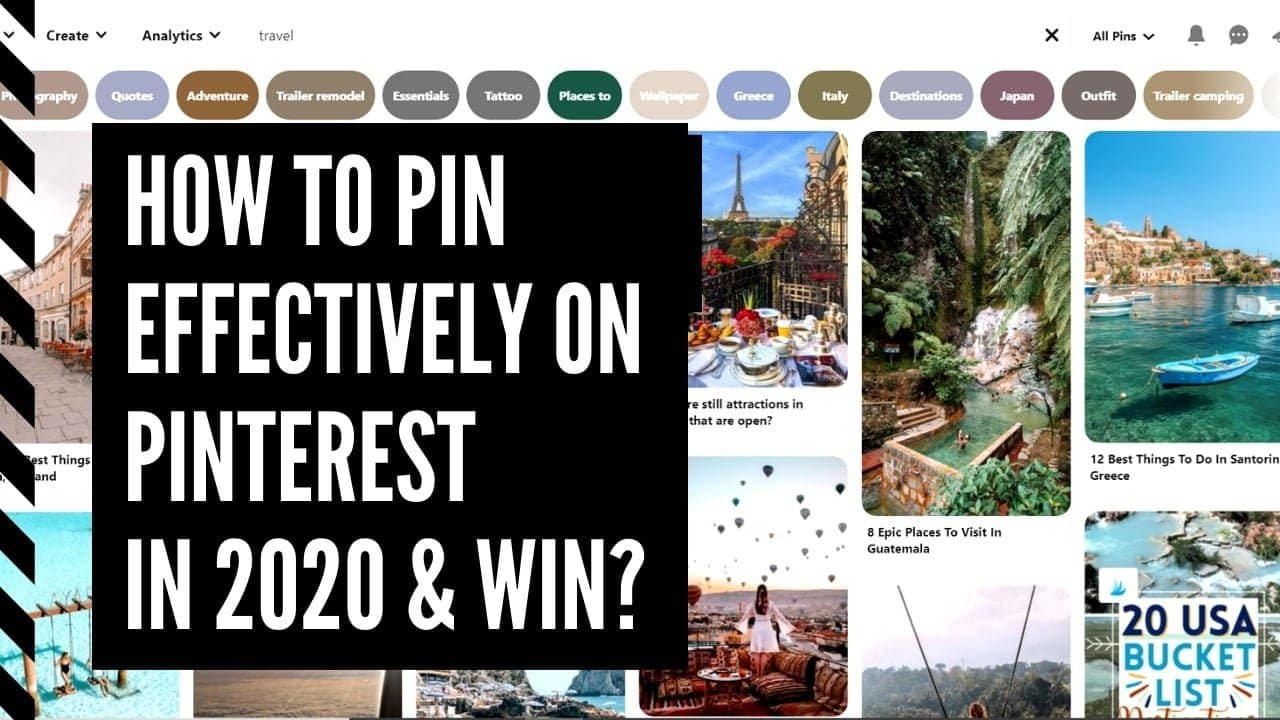How to Pin on Pinterest in 2020? 5 Tips to Pin Perfection
There is no doubt about it. Pinterest is that ‘win’ platform you were looking for to 1. bring you a steady stream of organic traffic 2. improve conversions for any products or services that you sell and 3. grow your mailing list organically to an already interested audience.
That said, Pinterest, just like other digital marketing platforms is something you need to learn to use properly and effectively before the rosy results come forward as a reality.
So how to pin on Pinterest in 2020? What is the best way to make your pin visible to a larger audience? What are the pinning techniques that get you the most leverage on Pinterest? In other words, how to pin perfectly?
Here are the 5 pinning tips that work in 2020. Some of these require you to chuck out everything you have previously loved about pinning on Pinterest because as the Pinterest algorithm changed around Feb 2020, so did these outdated tactics become useless (or worse, spammy).
So here are 5 ways to pin perfectly on Pinterest. In other words, 5 ways to pin on Pinterest so that you derive the maximum visibility on Pinterest and avoid getting flagged for spam (which will see your results tank overnight).
1. Fresh Pins
Make fresh pins for every single blog post or product you’re trying to promote. Do not reuse or recycle pins. Fresh pins are literally just that, completely fresh, not seen before, not used before. In fact, look at the picture below. It highlight the value importance that Pinterest gives to various pin combinations.
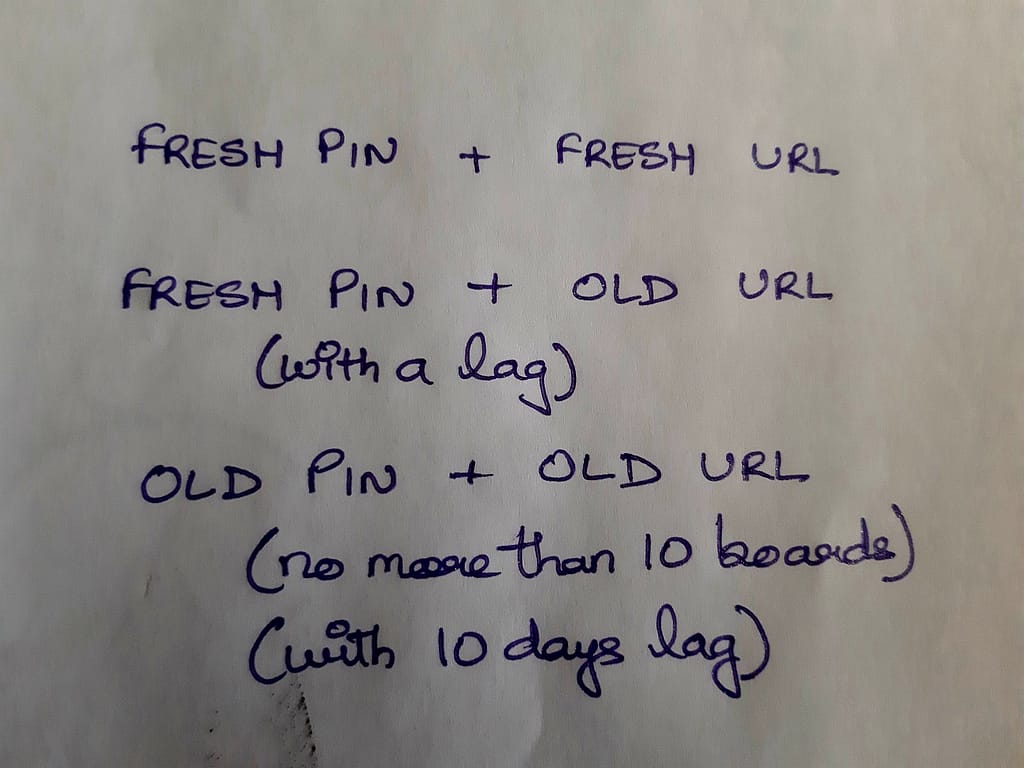
There are tricks to making a single pin in 5 or more ways of course, with each being considered a fresh pin for the purposes of keeping the Pinterest algorithm happy, and they are: 1. change up the image (either use a fresh one or use similar photos but with different angles, etc. 2. change up the font and colours and 3. change up the pin title, pin description and the title mentioned on the pin overlay (as we mentioned in the last Pinterest marketing article, Pinterest can not just read, catalogue and analyse the image you have used in your pin, but it can also read the content ON your pin i.e on the pin’s text overlay). See pic below:
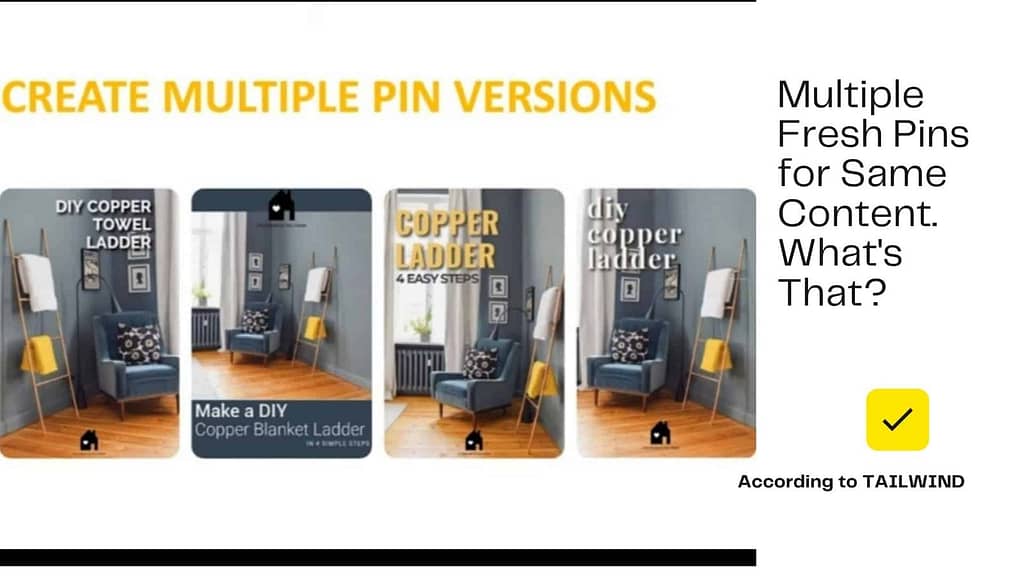
2. Don’t Skip the SEO
Taking the time to use a good SEO title and SEO description for your pin, adding two to five (non-spammy) hashtags, and using keywords properly and visibly on the actual pin within the pin’s text overlay will give you good results. Adding the pin to a good and specific board with a clear board title and board description also helps. Don’t forget to add a clear call to action on the pin and in the description to get you the most value.
Also, make sure you pin design and specifics are in line with the ‘good pin’ tips given in the image below:
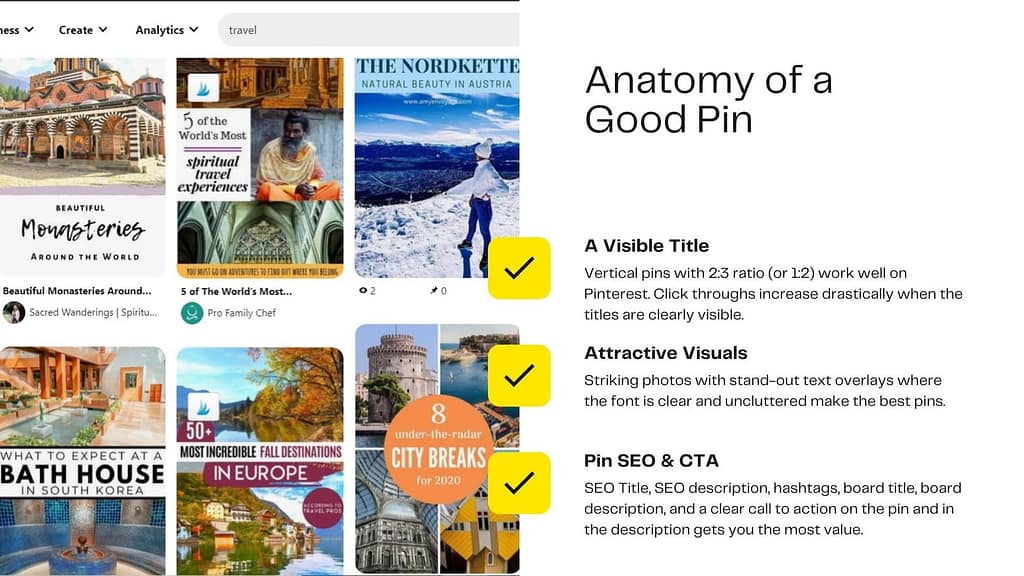
3. Get the Boards Right
When you first post a fresh pin, the very first board you post it to is the most relevant because it helps Pinterest categorise and catalog your pin. So get your very first board right. Name your boards precisely, not emotively, cryptically or generically. For example, if you blog about vegetarian recipes, so not name your board ‘Today’s Yummy’. Go for direct keywords. For your vegetarian recipe you could have a board titles vegetarian lunch recipes or quick vegetarian recipes, so on and so forth. You get the drift.
Don’t skip board SEO either. Add an appropriate description to your board. And don’t forget while saving the same pin with the same url, post it to no more than 10 boards with an interval of at least a week between each posting.
4. Chuck the 80-20 Principle
If you have taken any Pinterest courses prior to 2020, you may have been told that you should repost other people’s pins 80 (or realistically 70) percent of the time and only pin your own pins for the remaining 20 percent times.
Well, in February 2020, Pinterest came out and publically claimed that that is not necessary and you can chuck it out. Now, you can pin 100 percent of your own content provided you follow the rules and add fresh pins and fresh URLs. Repinning the same pin over and over indefinitely (because it is oh so good) or promoting the same URL every single day is a surefire way to get you blacklisted for spam.
5. Rich Pins & the Mystery of Blog Pins
Make sure your Pinterest account is set to business and after you verify your URL, ensure that you enable rich pins. Rich pins are a way for pinners to directly pin Pinterest images from your blog URL to their Pinterest account while retaining your SEO parameters like pin title and pin description. This way, you get two benefits (1) you make it easy for you blog loyalists to promote your blog post by pinning a pin their find valuable onto their accounts (and reach their followers) and (2) while they do so, they retain the SEO juice you have allocated to your pin image, ensuring that the pin gets indexed and shown to wider audiences. There are several rich pin tutorials on youtube that you can check out at your convenience. You can also check out the plugin TastyPins which has worked for several Pinterest accounts successfully.
Of course the above implies that are posting (and should be posting), images optimised for Pinterest within your blog posts!
Before I clock off, leaving you with the image below. It details out the do’s and don’ts while making your pin for Pinterest.
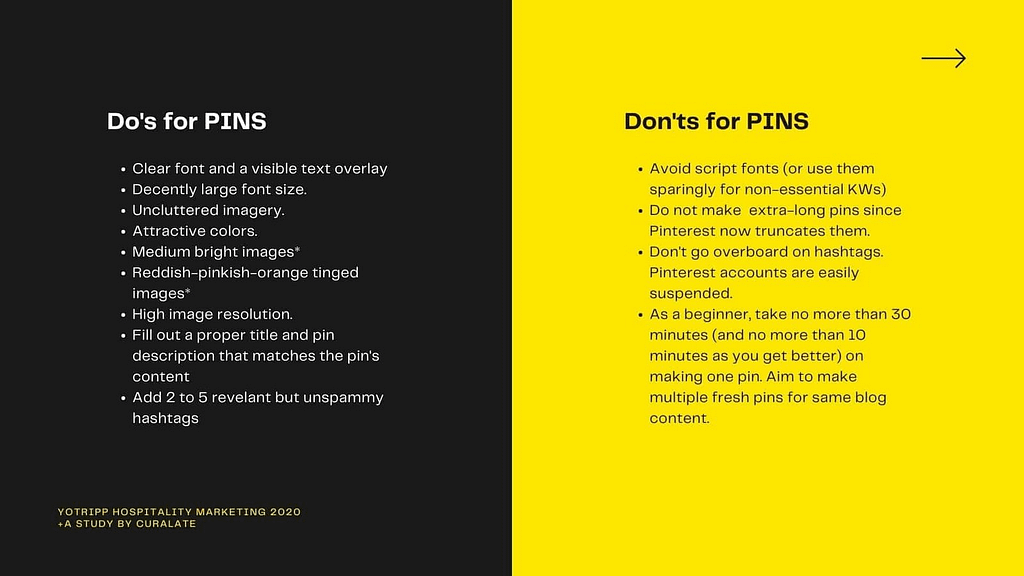
Hope this Pinterest blog post on how to pin perfectly helps you. Do check out my other blog post in this same series here – Pinterest for Beginners in 2020
If you want a more hands on tutorial on beginner Pinterest strategies for 2020, check out my webinar recording for TIMA (Marketing) below.
P.S This post is part of Blogchatter’s wonderful ‘My Friend Alexa 2020’ challenge.

